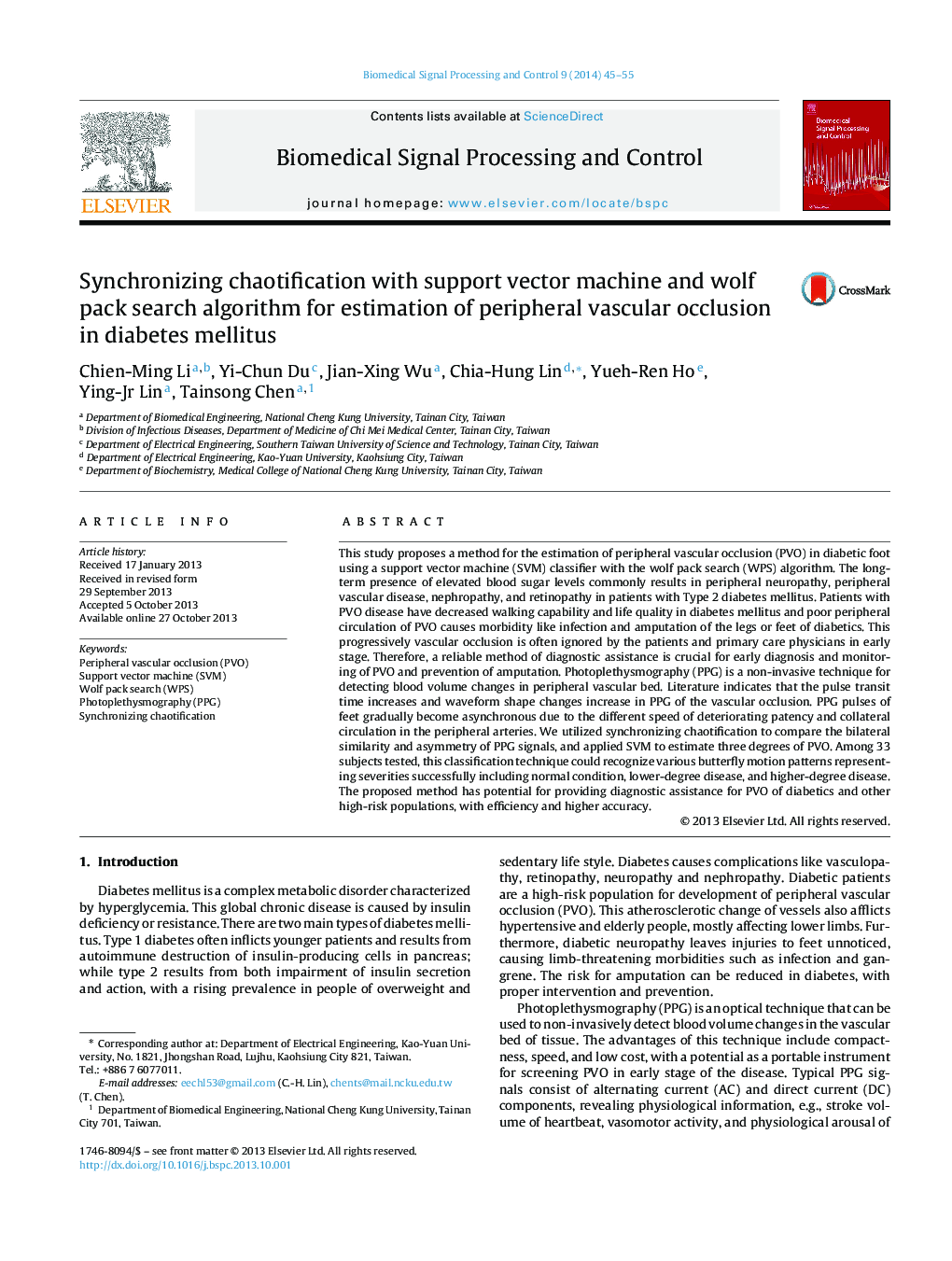| Article ID | Journal | Published Year | Pages | File Type |
|---|---|---|---|---|
| 557592 | Biomedical Signal Processing and Control | 2014 | 11 Pages |
This study proposes a method for the estimation of peripheral vascular occlusion (PVO) in diabetic foot using a support vector machine (SVM) classifier with the wolf pack search (WPS) algorithm. The long-term presence of elevated blood sugar levels commonly results in peripheral neuropathy, peripheral vascular disease, nephropathy, and retinopathy in patients with Type 2 diabetes mellitus. Patients with PVO disease have decreased walking capability and life quality in diabetes mellitus and poor peripheral circulation of PVO causes morbidity like infection and amputation of the legs or feet of diabetics. This progressively vascular occlusion is often ignored by the patients and primary care physicians in early stage. Therefore, a reliable method of diagnostic assistance is crucial for early diagnosis and monitoring of PVO and prevention of amputation. Photoplethysmography (PPG) is a non-invasive technique for detecting blood volume changes in peripheral vascular bed. Literature indicates that the pulse transit time increases and waveform shape changes increase in PPG of the vascular occlusion. PPG pulses of feet gradually become asynchronous due to the different speed of deteriorating patency and collateral circulation in the peripheral arteries. We utilized synchronizing chaotification to compare the bilateral similarity and asymmetry of PPG signals, and applied SVM to estimate three degrees of PVO. Among 33 subjects tested, this classification technique could recognize various butterfly motion patterns representing severities successfully including normal condition, lower-degree disease, and higher-degree disease. The proposed method has potential for providing diagnostic assistance for PVO of diabetics and other high-risk populations, with efficiency and higher accuracy.
